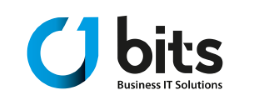Telecommunications | Scanner | Modem | E-mail | Document transfer The fax machine is a telecommunications device that became very important in the 1970s and 1980s and is still in use in many offices and public authorities around the world today.
It enables the transmission of printed documents over the telephone network by using analog signals to transmit the information pixel by pixel.
This technology was a crucial step in the evolution of office communication, as it made it possible to transmit documents to remote recipients in real time without having to rely on the postal service. Functionality The fax machine works by scanning a paper document line by line and converting the scanned information into analog signals.
These signals are sent via the telephone network to the recipient’s fax machine, which then converts them back into a printable version of the document.
Most fax machines use a resolution of 200 x 200 dpi (dots per inch), which is sufficient for the transmission of text documents.
However, newer models also support higher resolutions for the transmission of more detailed documents.
Technologically, the fax machine is based on similar principles to the scanner and the modem, with the scanner being responsible for converting physical documents into digital information and the modem enabling transmission via the telephone network.
With the introduction of the “Super G3” standard, the transmission speed was further optimized so that faxes can be transmitted within seconds.
The “G3” standard previously enabled speeds of around 14.4 kbit/s, while “Super G3” can reach up to 33.6 kbit/s. Areas of application Although digital communication technologies such as email and cloud-based document management have reduced the importance of the fax machine in recent decades, there are still industries in which faxes play an important role.
Especially in the legal and healthcare industries, where documents need to be transmitted quickly and securely, fax machines are often still widely used.
As faxes are usually recognized as legally valid documents, they also offer an advantage in environments where original signatures are required. Advantages Fax machines offer a number of advantages that continue to make them relevant in certain scenarios.
These include uncomplicated handling without an internet connection, the secure transmission of sensitive information and the ability to send physical documents directly without having to digitize them first.
Another plus point is the independence from complex IT infrastructures, which is particularly advantageous in less technically mature environments. The future of the fax machine As digitalization progresses and email, cloud storage and other modern communication solutions become more widespread, the fax machine is likely to become even less important in the future.
Nevertheless, it remains a useful tool in certain niche applications, such as in the government and medical sectors.
In addition, hybrid solutions such as “online fax” have emerged, where faxes can be sent and received over the Internet without the need for a physical fax machine.
Throughout its history, fax technology has also developed interfaces to other communication methods such as e-mail.
There are fax servers and online services that enable faxes to be sent and received via digital networks.
These hybrid systems contribute to the fact that fax technology still plays a role despite competition from new digital solutions.
The experts at BITS have replaced fax machines and related technologies with more modern technologies in a large number of projects. A selection of case studies and references can be found below.
“We are happy to support you with your digital challenges and look forward to hearing from you without obligation.”
Marc Schallehn, Managing Director BITS GmbH

Gerne unterstützen wir Sie bei Ihren IT Projekten. Ich freue mich über Ihre Kontaktaufnahme.
Selection of case studies and references
IT infrastructure and cloud services
IT infrastructure and cloud services Well positioned with security - IT infrastructure and cloud services from BITS In today's digital era, a solid IT infrastructure is the backbone of any successful company. [...]


